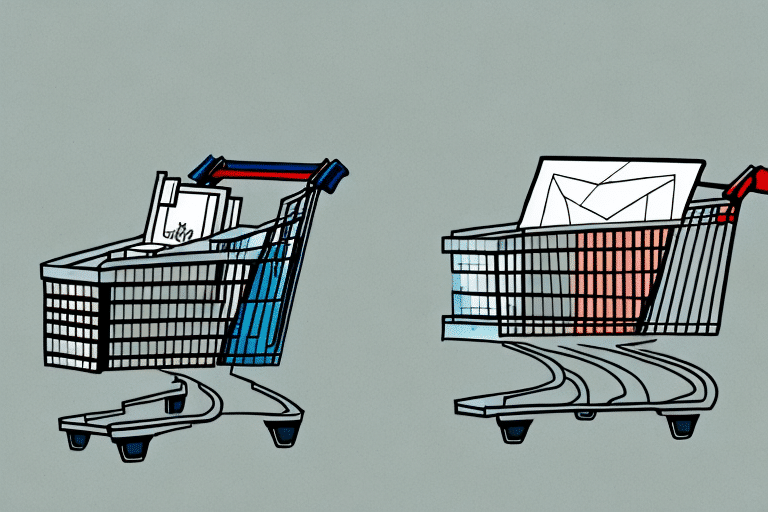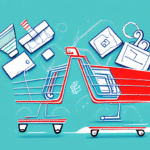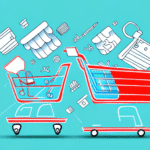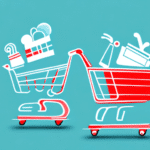Understanding Cart Abandonment: Causes and Impact
As an online retailer, one of the most significant challenges you may face is cart abandonment. This occurs when customers add items to their shopping carts but leave your site without completing the purchase. According to the Baymard Institute, the average cart abandonment rate hovers around 70%. This means that only three out of every ten shopping carts result in a sale, leading to substantial potential revenue loss.
Common reasons for cart abandonment include:
- Unexpected shipping costs
- Complicated checkout processes
- Lack of payment options
- Website performance issues
- Uncertainty about product details
Addressing these issues is crucial for maintaining a healthy bottom line and ensuring a positive customer experience.
Benefits of Abandoned Cart Automation
Implementing abandoned cart automation offers numerous advantages for e-commerce businesses:
- Increased Revenue: Recovering even a fraction of abandoned carts can significantly boost sales.
- Time and Resource Efficiency: Automation handles follow-ups, freeing up your team to focus on other tasks.
- Personalized Customer Experience: Tailored messages and offers can enhance customer engagement and loyalty.
- Valuable Insights: Analyzing abandoned cart data helps refine marketing strategies and product offerings.
Setting Up an Effective Cart Recovery System
Choosing the Right E-commerce Platform
Modern e-commerce platforms like Shopify, Magento, and BigCommerce offer built-in tools and integrations for abandoned cart recovery. Selecting the right platform ensures seamless implementation and scalability.
Implementing Automated Email Campaigns
Create a series of automated emails triggered by cart abandonment. These should include:
- A reminder email sent within 1 hour of abandonment
- A follow-up email with a special offer sent 24 hours later
- A final email highlighting customer reviews or additional incentives sent 72 hours post-abandonment
Optimizing the Checkout Process
Ensure that your checkout process is streamlined and user-friendly. Simplify forms, offer multiple payment options, and provide clear product information to reduce friction points that may lead to abandonment.
Email Retargeting Strategies for Cart Recovery
Personalizing Your Emails
Use the customer's name and reference the specific items left in their cart to create a personalized experience. Personalization increases the likelihood of engagement and conversion.
Offering Incentives
Include discounts, free shipping, or exclusive offers to entice customers to complete their purchase. Ensure that the incentives are relevant and valuable to the customer.
Creating a Sense of Urgency
Use time-sensitive language and limited-time offers to encourage prompt action. Phrases like "Complete your purchase within the next 24 hours for a special discount" can motivate customers to finalize their orders.
Enhancing Cart Recovery with Social Media Ads
Utilizing social media ads can complement your email retargeting efforts. Platforms like Facebook Ads and Google Ads allow for precise targeting based on user behavior.
Implementing Retargeting Pixels
Install tracking pixels on your website to monitor customer behavior. This data enables you to serve targeted ads to users who have abandoned their carts, reminding them of the items they left behind.
Crafting Compelling Ad Content
Design ads that showcase the abandoned products, include strong calls-to-action, and highlight any ongoing promotions or incentives. Visual appeal and clear messaging are key to capturing attention.
Measuring and Analyzing Cart Recovery Success
Key Metrics to Track
- Recovery Rate: The percentage of abandoned carts successfully recovered.
- Conversion Rate: The percentage of recovered carts that result in a completed purchase.
- Revenue Recovered: Total sales generated from recovered carts.
Using Analytics Tools
Leverage tools like Google Analytics and platform-specific dashboards to monitor and analyze your cart recovery performance. Regular analysis helps identify trends and areas for improvement.
Leveraging AI for Advanced Cart Recovery
The integration of Artificial Intelligence (AI) and machine learning into cart recovery strategies can provide deeper insights and enhance personalization:
- Predictive Analytics: AI can predict which customers are most likely to abandon their carts and target them proactively.
- Dynamic Content: Machine learning algorithms can tailor email content and offers based on individual customer behavior and preferences.
- Automated Decision-Making: AI can optimize the timing and frequency of follow-up communications to maximize recovery rates.
By harnessing these technologies, businesses can create more effective and efficient cart recovery campaigns.
Continuous Optimization and Avoiding Common Mistakes
Common Pitfalls to Avoid
- Overwhelming Customers with Emails: Sending too many follow-up emails can lead to frustration and unsubscribes.
- Neglecting Mobile Optimization: Ensure that your emails and website are mobile-friendly, as a significant portion of users shop on mobile devices.
- Ignoring Customer Feedback: Use feedback to understand pain points and continually refine your recovery strategies.
Continuous Testing and Improvement
Regularly test different elements of your cart recovery system, such as email subject lines, send times, and incentive types. A/B testing can help determine what resonates best with your audience.
Stay updated with the latest industry trends and best practices to ensure your strategies remain effective in the ever-evolving e-commerce landscape.
Conclusion
Abandoned cart automation is a powerful tool for e-commerce businesses aiming to recover lost revenue and enhance customer experience. By implementing effective email retargeting strategies, utilizing social media ads, leveraging AI technologies, and continuously optimizing your approach, you can significantly reduce cart abandonment rates and achieve your sales goals.




















